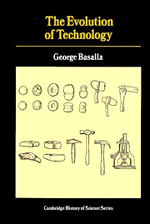Book contents
- Frontmatter
- Contents
- Preface
- I Diversity, Necessity, and Evolution
- II Continuity and Discontinuity
- III Novelty (1): Psychological and Intellectual Factors
- IV Novelty (2): Socioeconomic and Cultural Factors
- V Selection (1): Economic and Military Factors
- VI Selection (2): Social and Cultural Factors
- VII Conclusion: Evolution and Progress
- Bibliography
- Sources of Quotations
- Index
IV - Novelty (2): Socioeconomic and Cultural Factors
Published online by Cambridge University Press: 05 August 2014
- Frontmatter
- Contents
- Preface
- I Diversity, Necessity, and Evolution
- II Continuity and Discontinuity
- III Novelty (1): Psychological and Intellectual Factors
- IV Novelty (2): Socioeconomic and Cultural Factors
- V Selection (1): Economic and Military Factors
- VI Selection (2): Social and Cultural Factors
- VII Conclusion: Evolution and Progress
- Bibliography
- Sources of Quotations
- Index
Summary
In this chapter, examples from economics, anthropology, and history illustrate a wholly different set of explanations for the emergence of technological novelty. Of these new explanations, the ones based on socioeconomic factors are the best known and the most fully developed. Their popularity and advanced state of development stem from their connection with economic theory and the Marxist interpretation of historical change. Despite the sophisticated theories and empirical findings that can be marshaled in support of socioeconomic explanations, their drawbacks become evident under critical scrutiny. Therefore, in the end we turn to a broad-based interpretation of innovation that stresses cultural attitudes and values.
Making Things by Hand
“All imitation,” writes social anthropologist H. G. Barnett, “must entail some discrepancy.” No matter how dedicated a copyist is faithfully duplicating an original, the copy always differs from its model. This is true even when the copyist and the original maker are one and the same person; the mindset, materials, tools, and working conditions are all slightly different and that makes exact reproduction impossible. When more people are involved in the copying process, the number of deviations from the original are even greater.
The impossibility of imitation without discrepancy also holds true for mass-produced artifacts. Random variations are admittedly quite small, but they do exist despite the rigid controls employed by modern industry.
- Type
- Chapter
- Information
- The Evolution of Technology , pp. 103 - 134Publisher: Cambridge University PressPrint publication year: 1989



